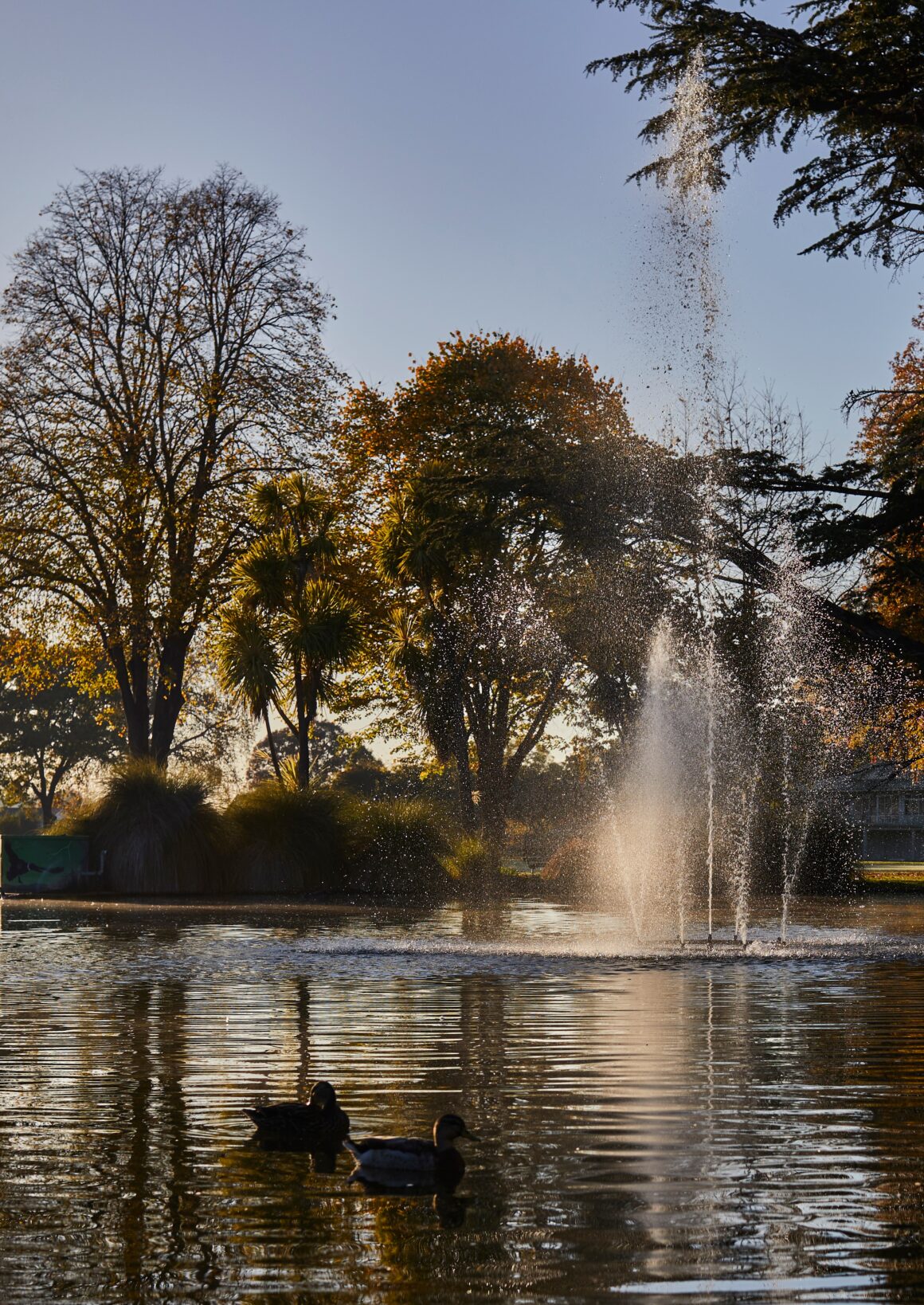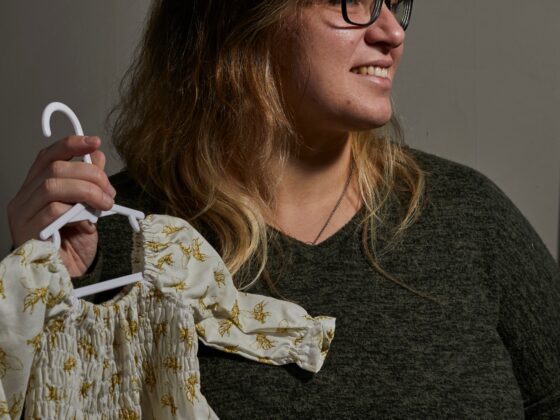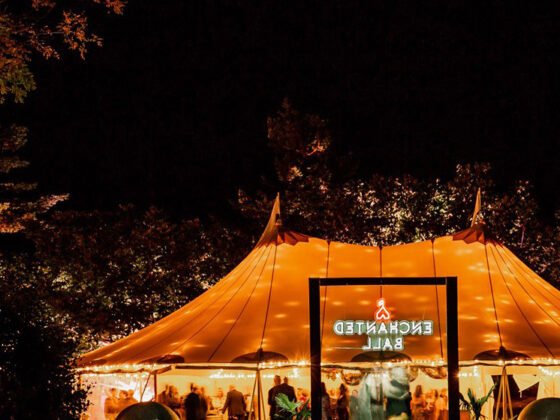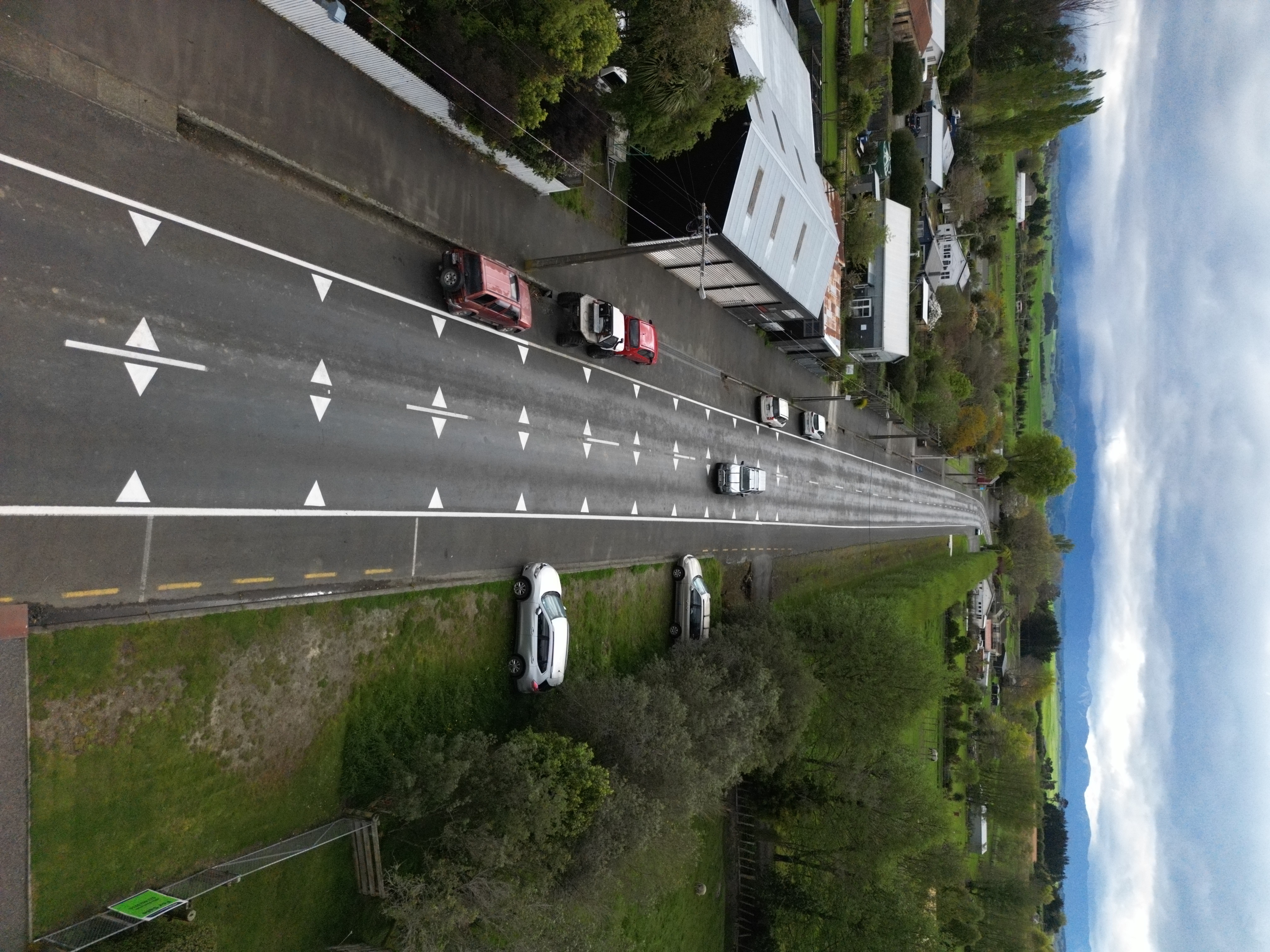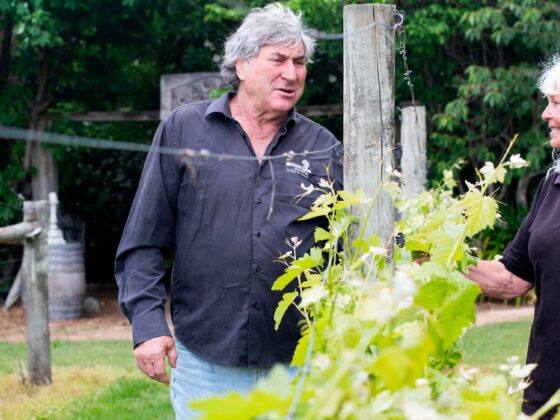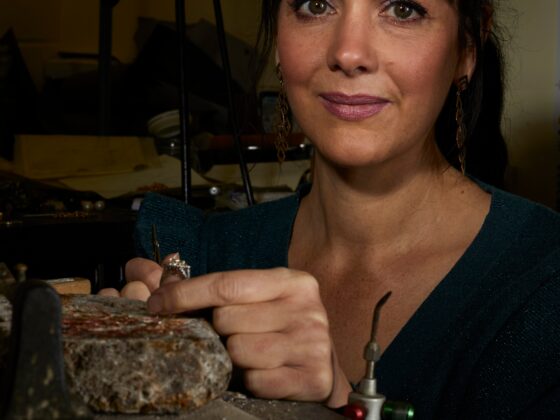For locals, Cornwall Park is well known and well loved. Many generations have spent time wandering around the beautiful grounds, visiting the birds and the gardens, or playing and practising cricket on the lush sports fields. Madeleine Anderson recently enjoyed a family outing there and reported back, with a little bit of history.
Like many Hawke’s Bay parents of a small child I am deeply familiar with the Acorn Playground in Hastings’ Cornwall Park. However, as I have recently learned, there is much more to know about this venerable park.
In 1898 the Williams family gifted two parcels of land to the Hastings Borough to establish an ‘English village green’ in Hastings, and in 1901 Cornwall Park was opened. The initial focus was on establishing a sports ground. To that end a cricket field, tennis court, cycling track, and grandstand were all in place by the end of 1906. An avenue of ti kouka/cabbage trees and other trees were planted around this time, but the first gardens were not established until 1913.
Cornwall Park was named after the then Duke and Duchess of Cornwall and York, later King George V and Queen Mary, who had toured Australia and New Zealand in 1901 and in 1911 a drinking fountain was built to commemorate King George’s coronation.
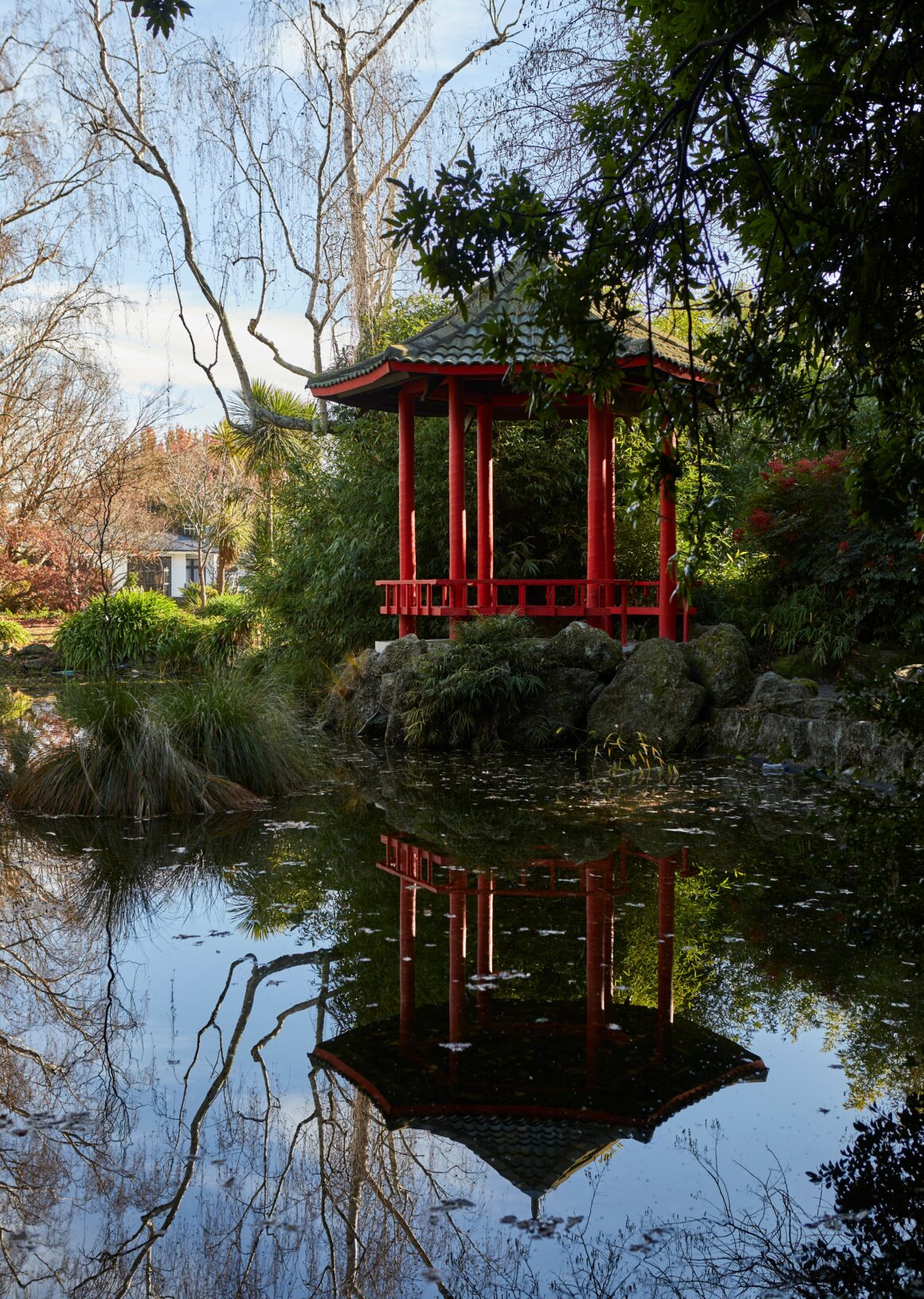
The lions surrounding the base were modelled after a lion then resident of Wellington Zoo – King Dick. The coronation fountain is still there: those regal lions have provided a climbing frame for generations of Hawke’s Bay children.
In the 1920s a rose garden, gates, tea kiosk and playground were all added to Cornwall Park. We can see the vestiges of this work in the current park – the Acorn playground is where the original playground was placed, with the recently renovated tea kiosk nearby, and the imposing wooden beams in the rose garden at Fitzroy Street are the remains of the gates once installed at this entrance. During this decade the aviary was built, along with a small zoo. The much-refurbished aviary is still occupied, but the zoo was disestablished in 1936.
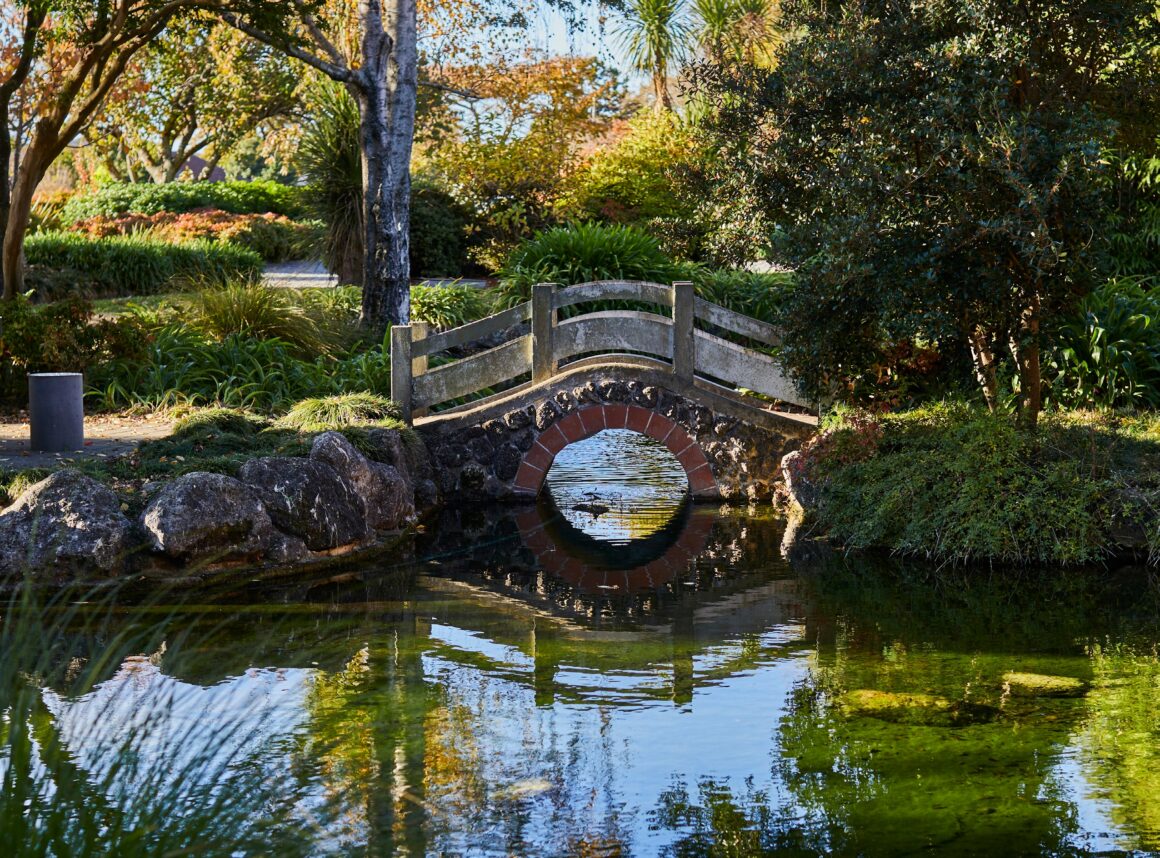
A major overhaul of Cornwall Park was undertaken in the 1930s. This was partly in response to the 1931 earthquake and was also part of the central Government’s response to the depression by funding projects around New Zealand. The park was remodelled using rubble from the ruined city centre, the duckpond dug, and paths and seating were installed.
By the 1980s, New Zealand was looking more towards Asia as a partner. During this time Hastings was sistered to Guilin, a city in China. The Osmanthus Garden, designed in 1991 by Zhao Jian, a garden designer from Guilin, opened in 1998 to celebrate the fifteen-year anniversary of the sister-city relationship. It is a place for quiet reflection, and is used as a site for cultural events, such as the light festival and Chinese New Year celebrations.
My mother and I recently walked around the gardens of Cornwall Park and, in a way, you can walk through time and history while you do so.




Entering the rose gardens you pass the pillars and beams of the old gates. They tower overhead, and, to me, are reminiscent of Japanese gates. I have never noticed them before, having always entered from Tomoana Road.
It is winter when we walk. Many plantings are quietly sleeping through the cold: the tree branches bare and flower beds empty. We look for abandoned bird’s nests in the magnolia branches with my son.
But even in mid-winter there are signs of life. Silky magnolia buds cover the trees, fat and close to bursting. Violets are densely planted beneath them and we smell their perfume as we walk past. An avenue of conifers smell crisp and fresh in the cold air, and leaf litter and mulch hold the promise of spring growth.
As my son and husband head to the playground, we follow one of the paths through the garden. First we go to the John Holt Memorial Display House, a glass hothouse built in 1966. The doors are closed and locked, so we peer through the windows. Bright cyclamens are massed on one side and flowering bromeliads on the other, filling the space with brightness and colour.
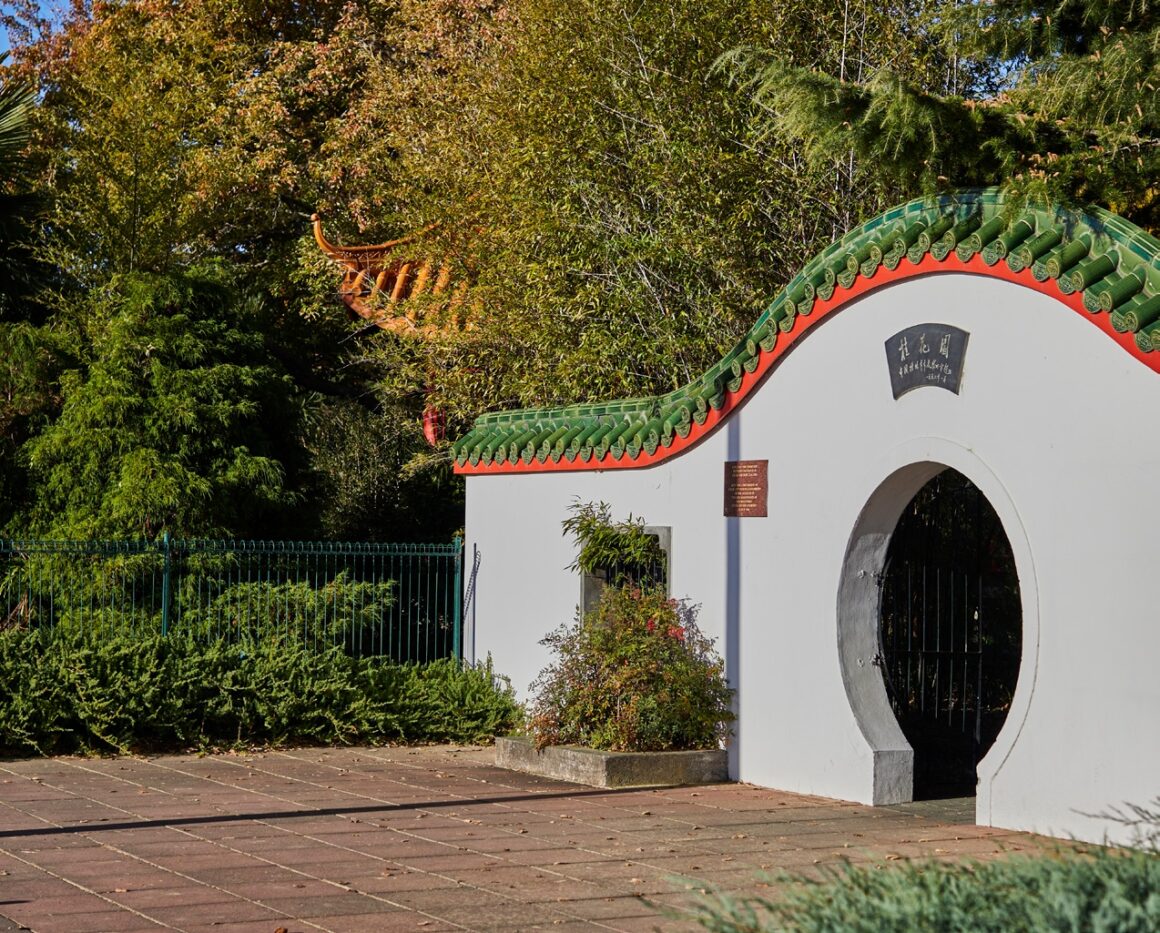
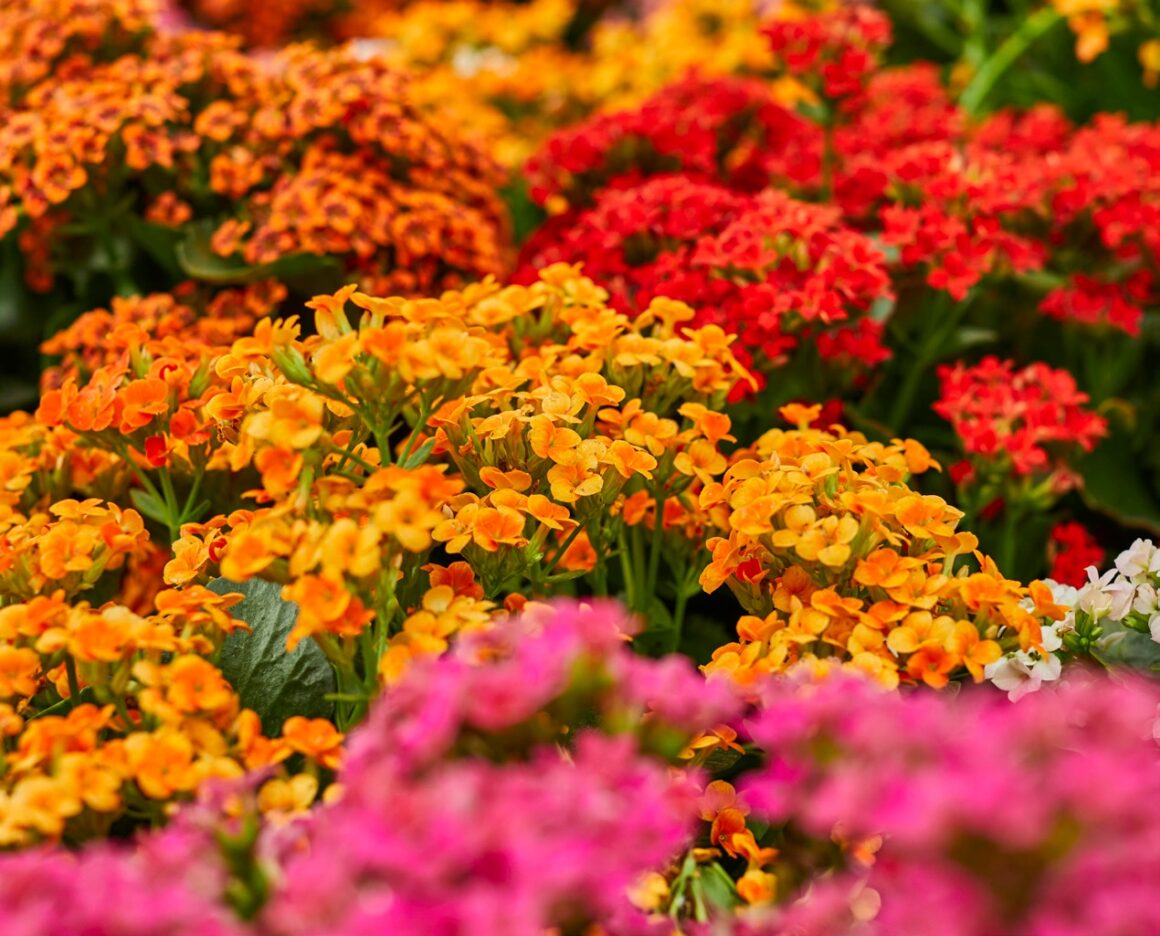
In the centre a fountain gurgles into a small pond surrounded by tropical trees and shrubs.
Just past the hot-house is an arrangement of flower beds. Ornamental kale is interplanted with marigolds and polyanthus, and monarch butterflies rest on bright yellow wallflowers nearby, enjoying the sun.
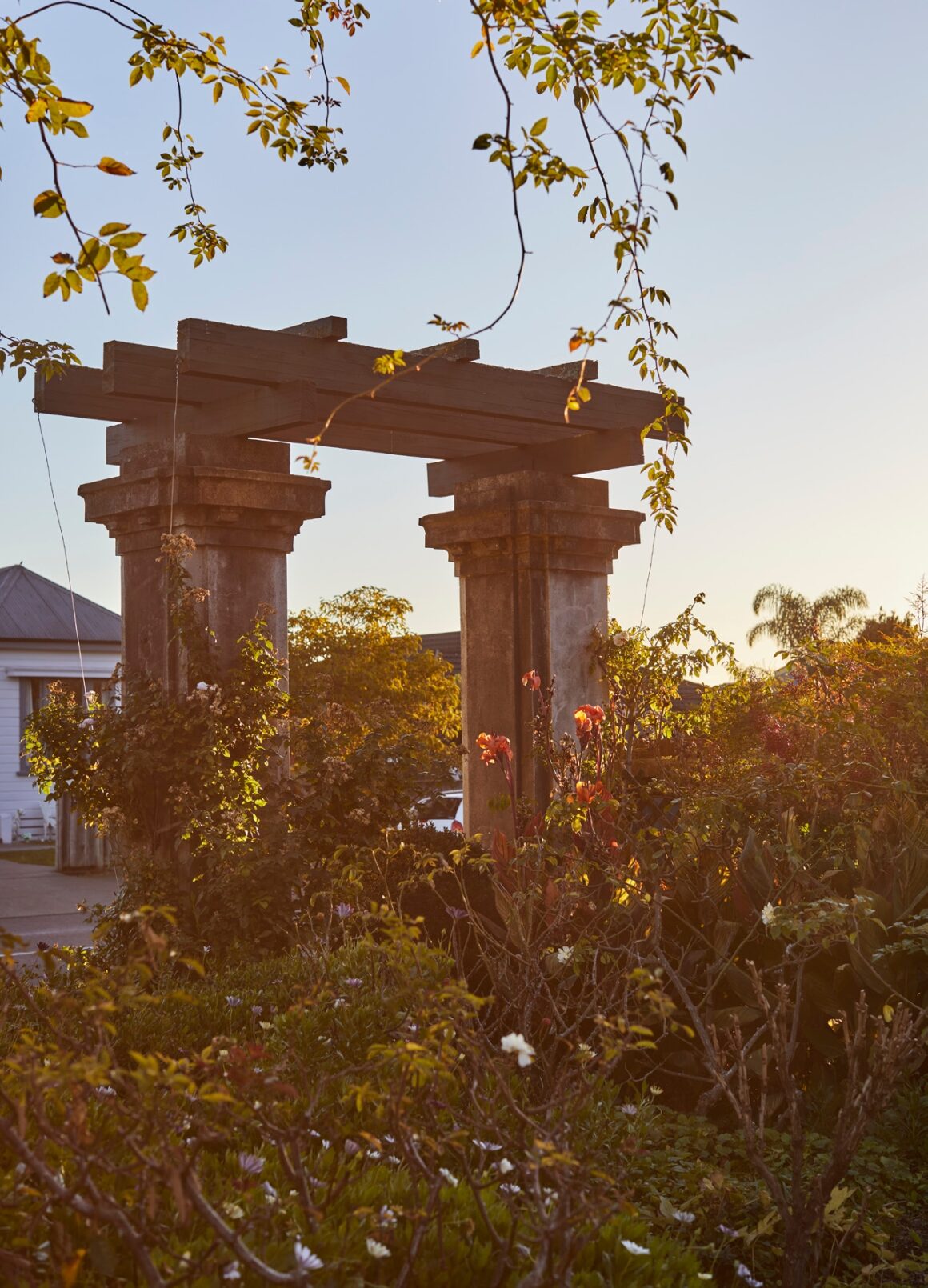
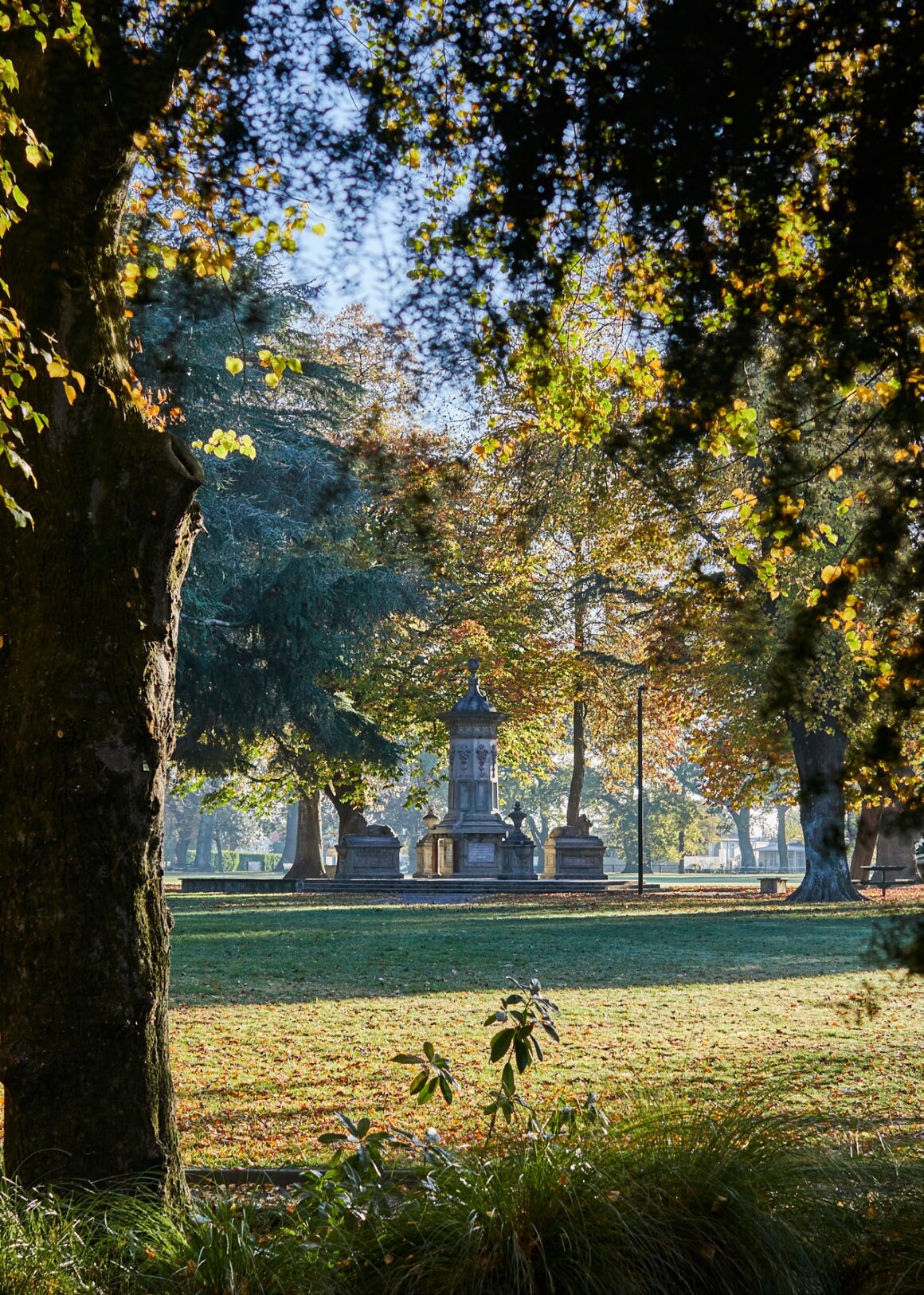
We enter the native bush area. It seems cooler and quieter here. Small native trees are massed to our left and alongside the path, renga renga lilies are planted beside the remainder of the Makaramu Stream, which ran through the Heretaunga Plains long before Pākeha were here. To our right is a towering old tree. As we get closer, a nameplate informs us it is a totara, and is the first of the trees of significance that we notice on our walk.
We cross to a circular gate leading into the Osmathus Garden. Nearby, a group of young adults head to the same gate – I hear one young man tell his friends they are going to his favourite place. We enter the Chinese garden behind them and take our time looking around. Following the path, we see bamboo, a flowering prunus and camellias, and we admire the bright red berries on the nandina, also called Chinese sacred bamboo. Crossing a bridge, I notice the young people gathered together in a pagoda, looking into the pond.
We walk along another path, past a few rills, hellebores nestled under the shrubs and a European lime. As we turn towards the Acorn playground, I am drawn to the two Himalayan cedars nearby, an Atlas cedar planted between them.

They soar towards the sky with thick, curved, low-hanging branches that are a delight to climb. You often see children circling their trunks, stepping from one branch to the next. I imagine the hands that planted those trees – did those people imagine the distant mountain ranges these trees came from, as I do?
From here we walk to the playground. Upgraded in 2019, it has a toddlers’ area, flying fox, multiple climbing areas and a splash pad for summer. Dominating the playground is a climbing structure. A rope-net pyramid is topped by a fort, with an enclosed bridge across to steel mesh acorns. Slides and wide ladder return back to the ground.

I leave my mother to rest, and I walk to the aviary. The path runs along the stream, past the cricket pavilion, and is shadowed by mature trees. The aviary is open-air, with ponds for the red-eared turtles who lie in the sun while the birds scatter then regroup above them. Budgerigars, cockatiels and ring-necked parrots are gentle, smoky colours: grey, blue, yellow and green. More vivid are Alexandrine and red-rumped parrots, and rainbow lorikeets – bright green, blue and red feathers iridesce in the sunlight.

As we leave I wonder what is next for Cornwall Park? The council plan is for the stream to be dredged and replanted, making the waterway healthier for native fish to repopulate. When this happens it will be the next stage in the life of this place, and will reconnect Cornwall Park to the awa of long ago. To me that feels like coming full circle: past to future.

